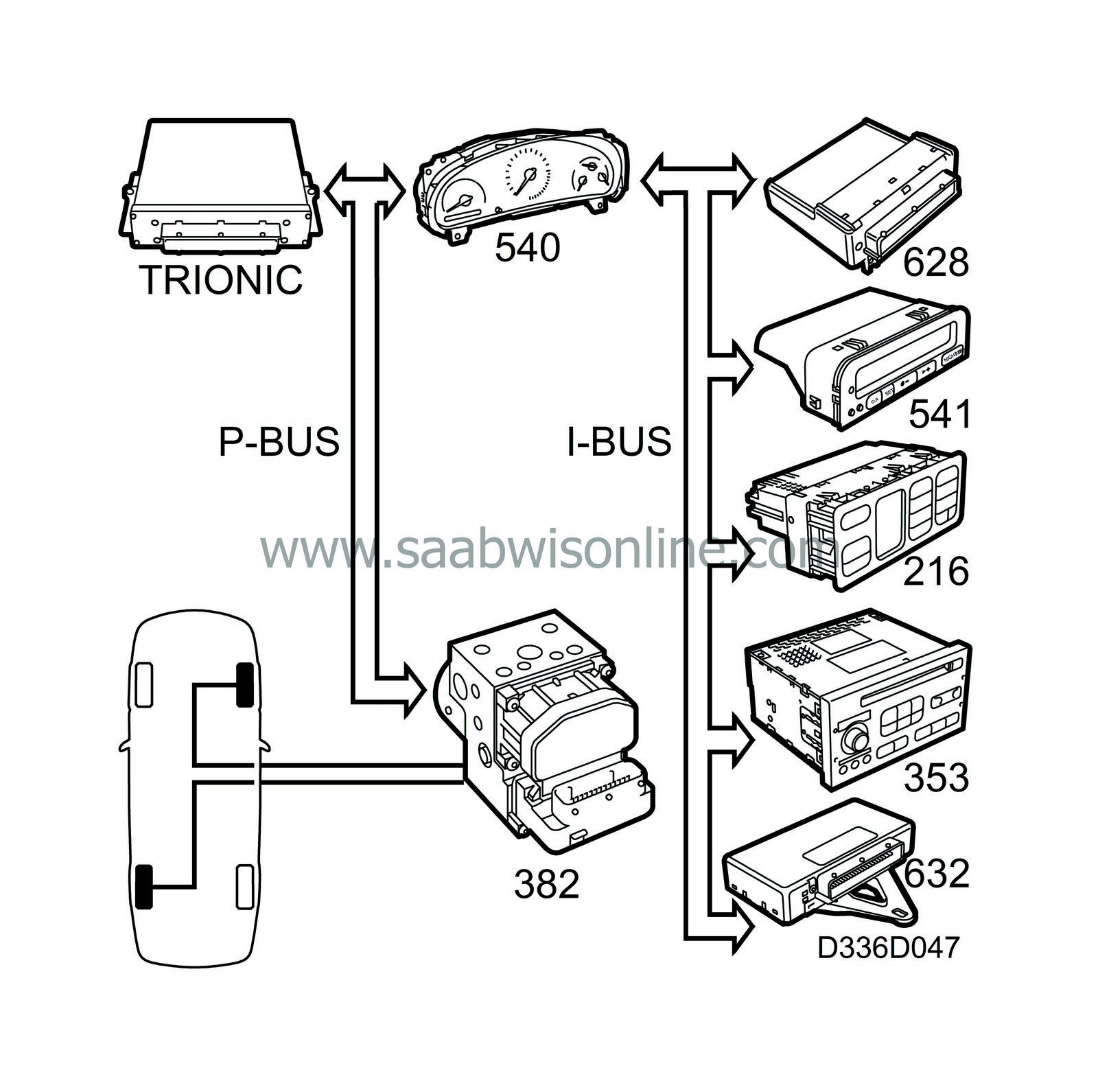Description of operation, function chains
| Description of operation, function chains |
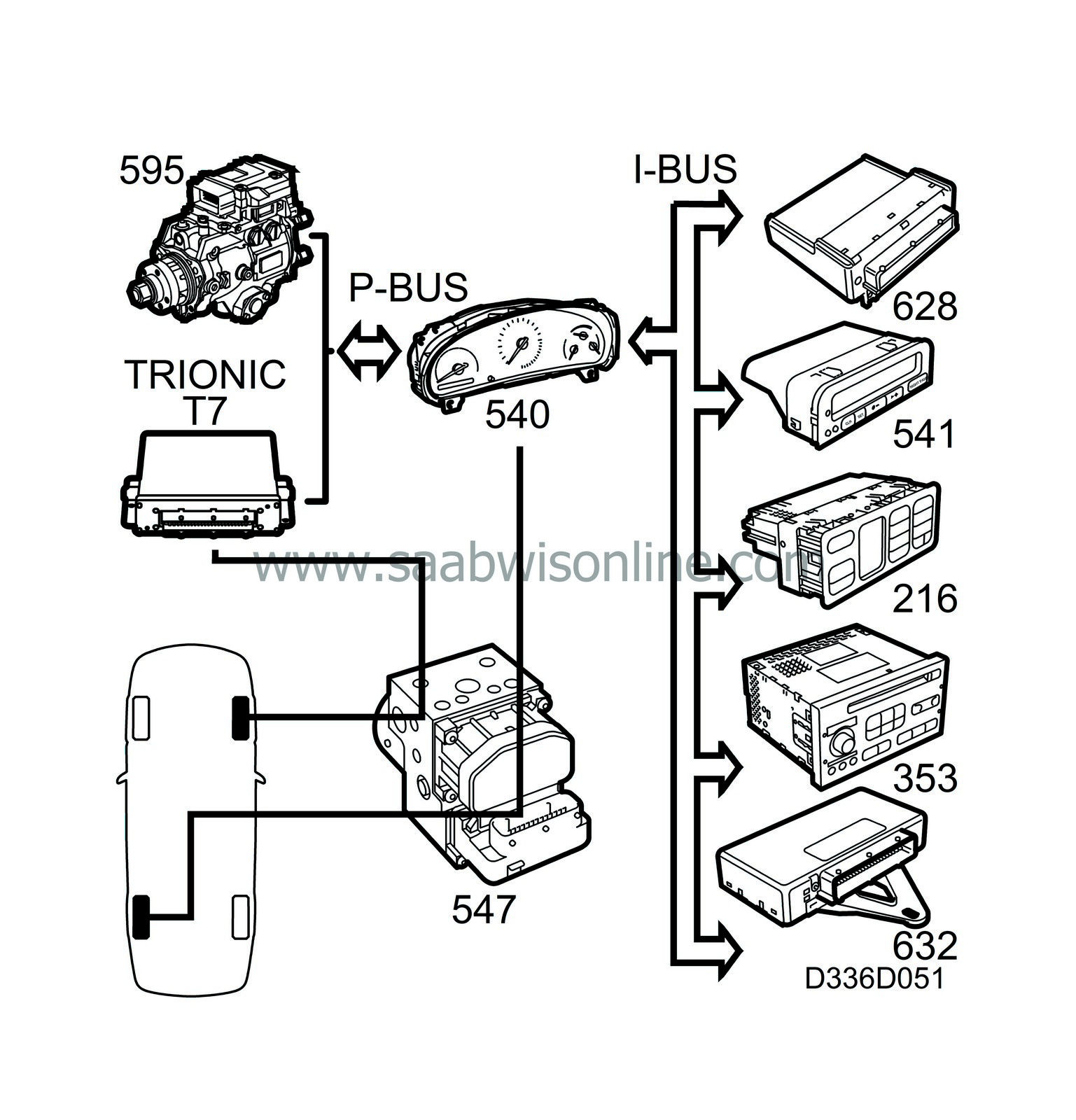
In the bus system a large number of function chains can be identified. Below are three examples of important ones.
| 1. Vehicle speed |
Cars with ABS
Vehicle speed is sensed by the ABS through an inductive sensor at each wheel. The sensor supplies the control module with alternating current, the amplitude and frequency of which increase with increasing wheel speed. The frequency is proportional to wheel speed, 29 Hz at a speed of one wheel revolution per second. The ABS control module uses the 4 wheel speeds to prevent wheel lock-up on braking.Several other systems in the car require information concerning the vehicle speed. Cars with ABS control modules not connected to the bus have a control module output for the speed of each wheel. A transistor grounds the respective output 29 times per wheel revolution.
The main instrument unit is connected through a lead to the output for the rear left wheel speed. The rear wheel is used as a non-driving wheel provides the most precise measurement of the road distance. The frequency modulated signal is converted to km/h in the main instrument unit, where a correction is also made depending on the programmed type of tyre.
Cars with TC/ABS
The TC/ABS control module on cars with Traction Control is connected to the P-bus. The TC/ABS control module sends a wheel speed signal for each of the four wheels but it is only the information from the rear left and front right wheels that is used.Wheel speed RL: The TC/ABS control module sends bus message “wheel speed rear left xxx km/h”, which used by MIU (internally). MIU sends “Vehicle speed” on to the P-bus and I-bus.
Wheel speed FR: The TC/ABS control module sends bus message “wheel speed front right xxx km/h”, which is used by Trionic.
Since the main instrument unit is connected to a bus, all control modules connected to the bus are supplied with information on the speed of the left-hand rear wheel and the odometer reading.
The table of sent bus messages shows that MIU sends vehicle speed, which is used by: Trionic, DICE, SID, ACC, Audio and TWICE. MIU also sends the mileage, which is used by SID for the service indicator.
The various systems use the vehicle speed for the following functions:
| • |
The engine control module on diesel cars has a separate lead from ABS for the front right wheel speed. Bus information is not used because the engine management system (like Trionic) requires information on the speed of a drive wheel.
The value is used for the cruise control function and to calculate the current gear position. |
|
| • |
Trionic has a separate lead from ABS for the front right wheel speed. On cars with Traction Control, Trionic receives wheel speed information via the bus. The bus value is used for security in cruise control, both values must exceed 40 km/h before it can be engaged. The value is also used as a substitute value if the front right wheel speed should be absent.
|
|
| • |
The DICE uses the value to activate the radiator fans for A/C on, high outdoor temperature and low speed.
|
|
| • |
The SID uses the value for trip computer functions.
|
|
| • |
The ACC uses the value for activating recirculation in connection with high outside temperature and low speed.
|
|
| • |
The Audio system uses the value for increasing the volume at high speeds.
|
|
| • |
The TWICE uses the value for automatic locking of the doors when driving off (certain markets).
|
|
Diagnostics
The ABS has extremely good diagnostics for its wheel sensors. This means that with a high degree of certainty the wheel speed signals will be present on the control module's four outputs if no diagnostic trouble codes have been generated in the system.Neither the main instrument unit nor any of the other bus systems have speed signal diagnostics for the LH rear wheel. If the speedometer is working, however, it is certain that speed information is present on the bus and consequently available to all systems connected to the bus.
If the speedometer is not working and the speed reading obtained on one of the bus systems is always 0, and there are no diagnostic trouble codes in the ABS, then the fault is probably in the lead between the ABS and MIU.
Trionic conducts diagnosis of the front right wheel speed signal (wire from ABS) but it may require a long journey without a speed signal before a diagnostic trouble code is generated.
With Trionic, the two speed signals used in the car can be read on the diagnostic tool
| 2. Immobilizer, cars with Trionic T7 engine management system |
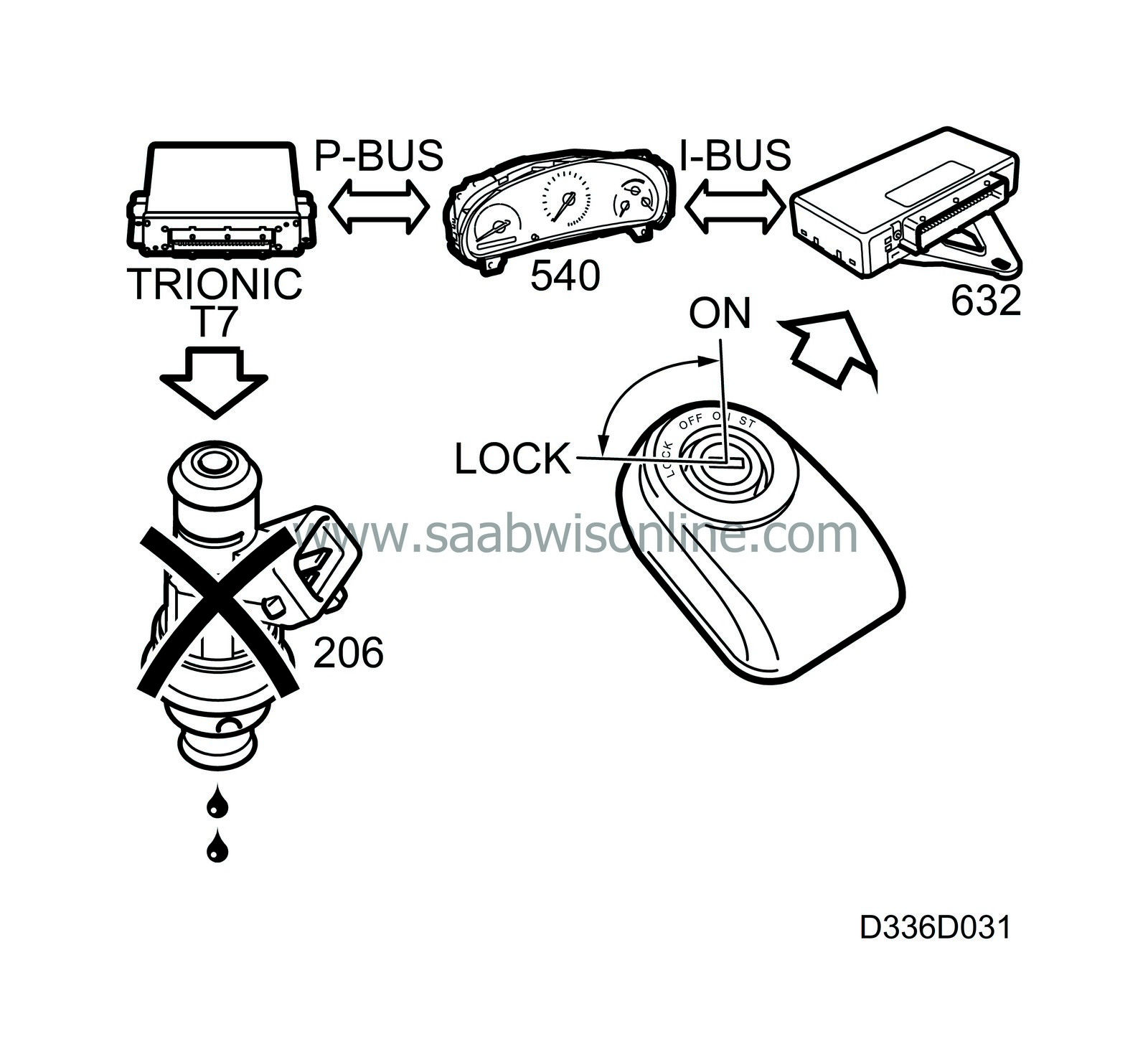
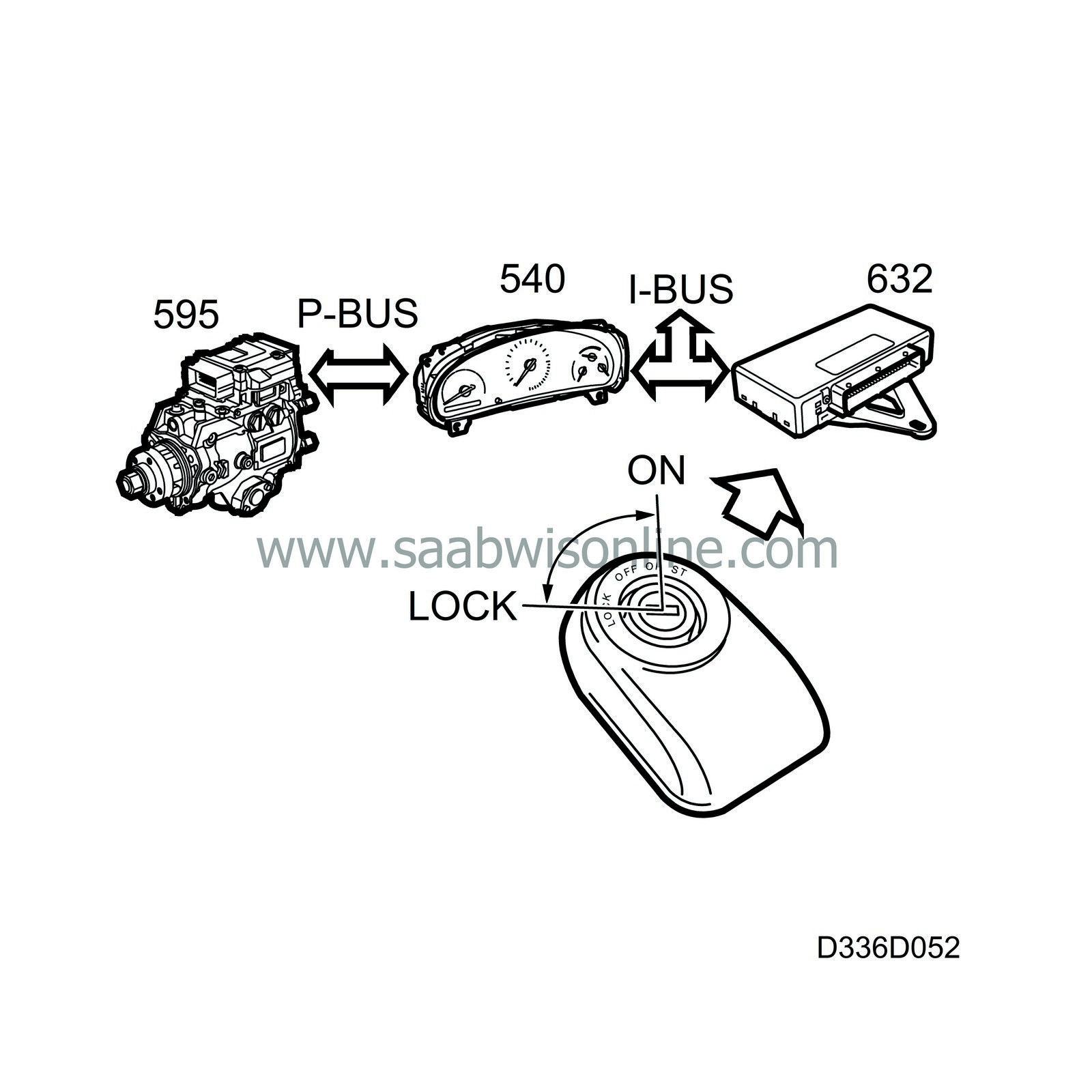
When the ignition is turned on, the TWICE checks that the right key is inserted in the ignition switch. A circuit built into the remote control part of the key sends a code by means of inductance to a coil round the ignition switch under the centre console. The code is passed on to the control module, which checks that it is correct. The TWICE also checks that the right MIU is fitted in the car. The MIU continuously sends out an ID number on the bus.
If the key and the MIU's ID number are OK, the TWICE sends out an ”Immobilization OFF” message on the bus. The Trionic T7 acts on this information by cancelling fuel shut-off, which is always activated whenever the ignition is turned on.
Diagnostics
The immobilizer must be reprogrammed in TWICE after changing TWICE, MIU or the Trionic control module. The engine will not start unless this is carried out and diagnostic trouble code P1460 will be generated in Trionic T7.If the immobilizer is not reprogrammed in TWICE, it will generate the following diagnostic trouble codes: DTC B1780 after changing T7, DTC B1782 after replacing MIU.
If the diagnostic trouble code is generated even though programming has been performed, fault diagnosis must be carried out on the immobilization function in the TWICE.
| 2. Immobilizer, cars with diesel engines |
When the ignition is turned on, the TWICE checks that the right key is inserted in the ignition switch. A circuit built into the remote control part of the key sends a code by means of inductance to a coil round the ignition switch under the centre console. The code is passed on to the control module, which checks that it is correct. The TWICE also checks that the right MIU is fitted in the car. The MIU continuously sends out an ID number on the bus.
If the key and the MIU identification number are OK, TWICE will transmit the message ”Immobilizer OFF” on the bus.
The immobilizer information is used directly by the engine control module on cars with diesel engines.
Diagnostics
The immobilizer must be reprogrammed in TWICE after changing TWICE, MIU or the engine control module. The engine will not start unless this is carried out and diagnostic trouble code P1460 will be generated in the engine management system.TWICE will generate DTC B1782 if a new MIU is fitted.
TWICE must accept the transponder being used before allowing the immobilizer code to be programmed.
| 3. A/C, cars with the Trionic T7 engine management system |
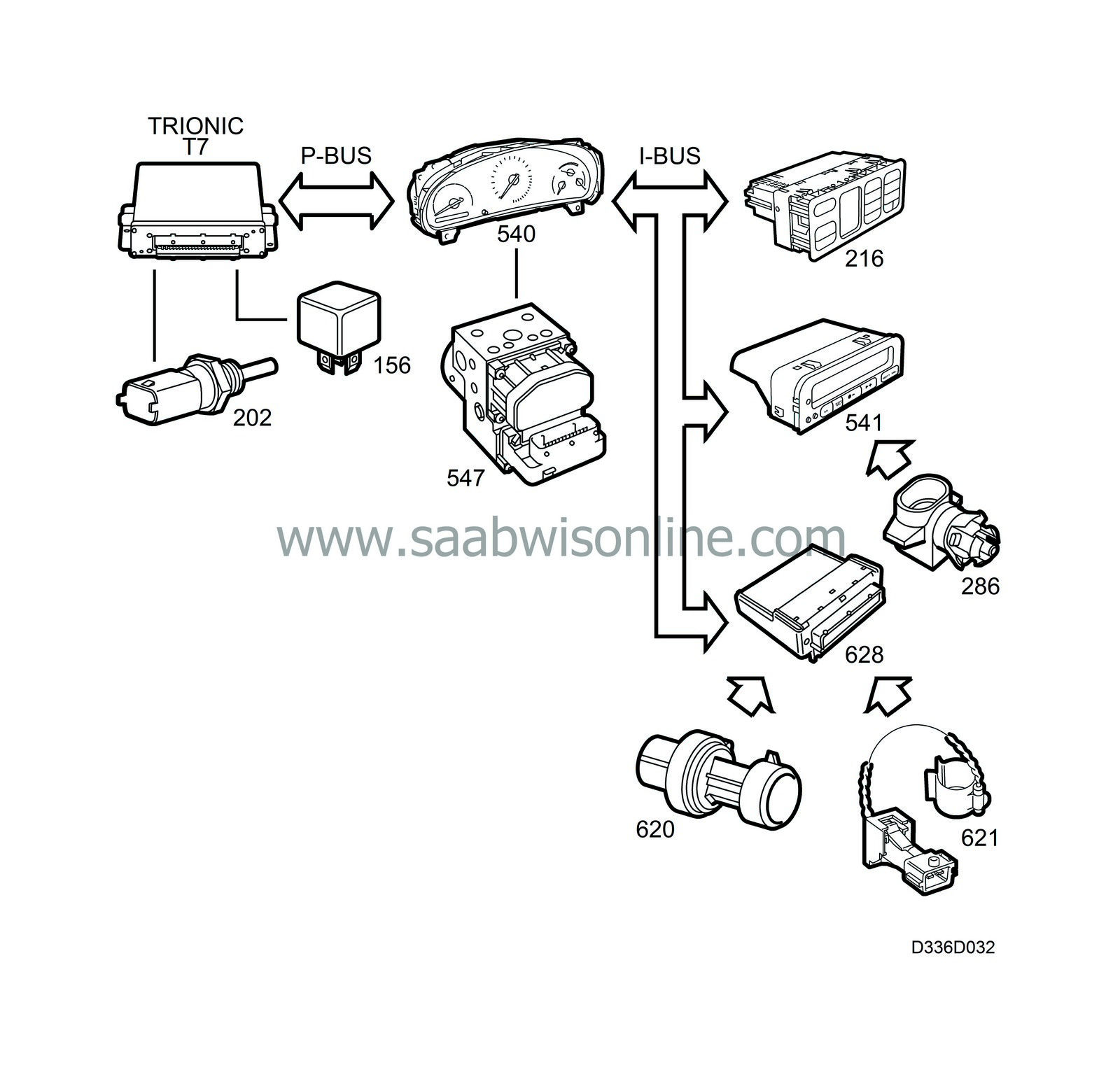
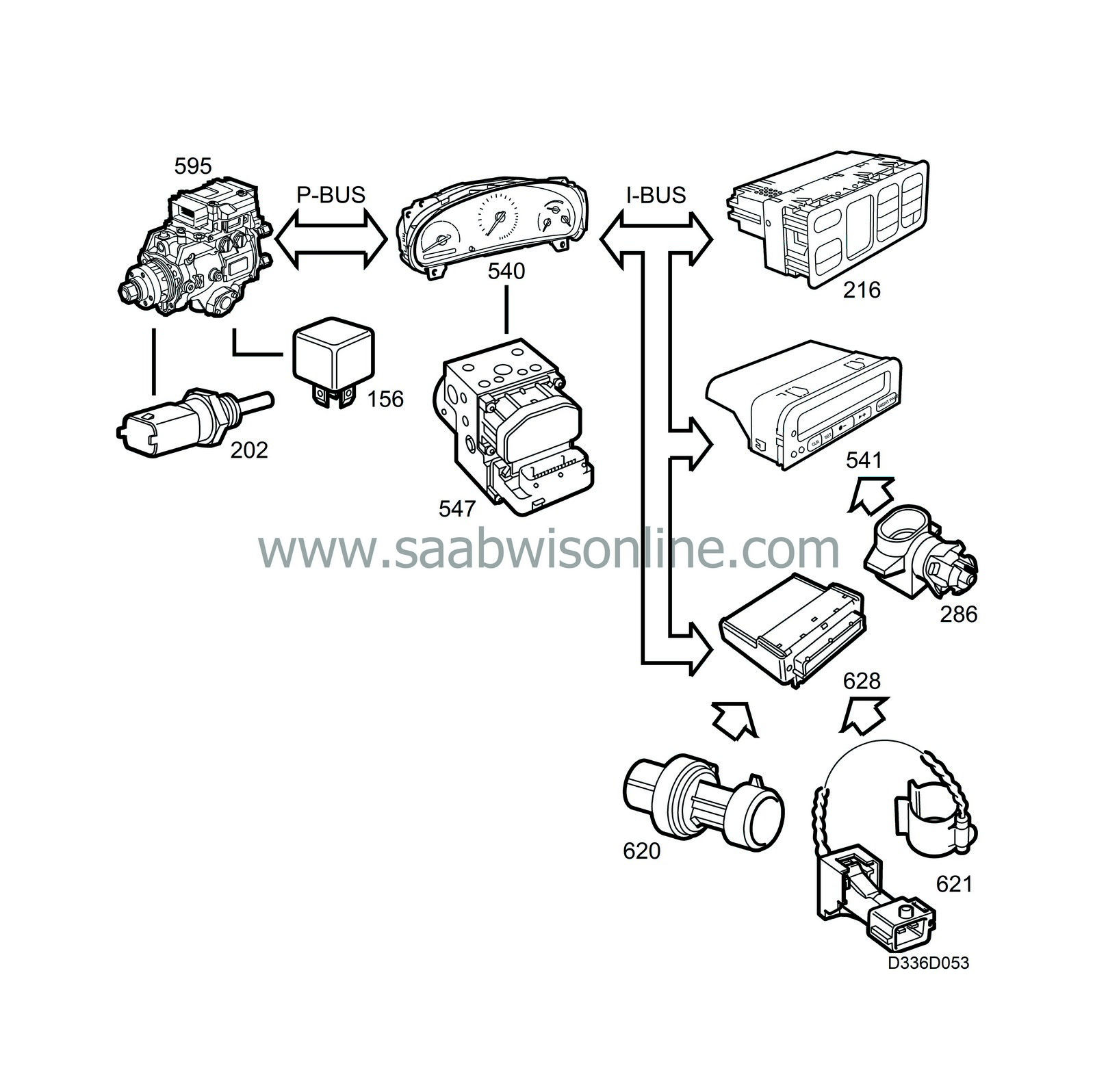
A number of conditions must be fulfilled for the A/C relay to be grounded and the A/C compressor's electromagnetic clutch to operate.
In AUTO mode, the ACC unit will request the DICE for A/C engagement if:
| • |
The outside temperature (information via bus from SID) is above 0°C.
|
|
The DICE then requests the Trionic control module to ground the A/C relay if the following conditions are fulfilled:
| 1. |
The engine coolant temperature (bus information from the Trionic) is below 125°C.
|
|
| 2. |
Refrigerant pressure (own sensor) on the high-pressure side is between 2 and 27 bar.
|
|
| 3. |
The temperature in the evaporator (own sensor) must meet the following conditions:
|
|
| 3.a. |
If the evaporator temperature is higher then 3°C, DICE will send an A/C engagement request via the bus to the Trionic control module.
|
| 3.b. |
If the evaporator temperature is below 0°, the A/C compressor can only be switched on if points 4 and 5 are fulfilled.
|
| 4. |
The outside temperature (bus information from SID) must be above 25°C.
|
|
| 5. |
One of the following conditions must also be met:
|
|
| 5.a. |
The engine must have been running for less than 30 minutes (bus information from the Trionic control module).
|
| 5.b. |
Vehicle speed is below 5 km/h (bus information from the MIU).
|
The Trionic T7 then activates the compressor relay.
Diagnostics
In the event of a fault in any of the aforementioned sensors in the systems concerned, the A/C compressor will not work. The function chain clearly shows the importance of obtaining diagnostic trouble code readouts from all systems because several systems are involved in any given function.If there are no diagnostic codes with the symptom description ”A/C not cooling”, all the input values that can block the function must be gone through methodically with the read values command on the diagnostic tool. The compressor relay is activated in the Trionic. Then perform fault diagnosis on the system that ”owns” the sensor or actuator that is faulty.
| 3. A/C, cars with diesel engines |
A number of conditions must be fulfilled for the A/C relay to be grounded and the A/C compressor's electromagnetic clutch to operate.
In AUTO mode, the ACC unit will request the DICE for A/C engagement if:
| • |
The outside temperature (information via bus from SID) is above 0°C.
|
|
DICE then sends the A/C request if the following conditions are fulfilled:
| 1. |
Coolant temperature (information via the bus from MIU/engine control module) is below 125°C.
|
|
| 2. |
Refrigerant pressure (own sensor) on the high-pressure side is between 2 and 27 bar.
|
|
| 3. |
Temperature in the evaporator (own sensor) must be above 4.5°C.
|
|
In cars with diesel engines, the A/C request is used directly by the engine control module, which activates the A/C relay as soon as the engine has started. Diesel engine control modules also have the condition that the coolant temperature must be below 120°C.
In practice, this means that the condition for the engine coolant temperature in DICE (point 1) is meaningless on cars with diesel engines.
Diagnostics
In the event of a fault in any of the aforementioned sensors in the systems concerned, the A/C compressor will not work. The function chain clearly shows the importance of obtaining diagnostic trouble code readouts from all systems because several systems are involved in any given function.If there are no diagnostic codes with the symptom description ”A/C not cooling”, all the input values that can block the function must be gone through methodically with the read values command on the diagnostic tool. The compressor relay is activated in the engine management system. Then perform fault diagnosis on the system that ”owns” the sensor or actuator that is faulty.

